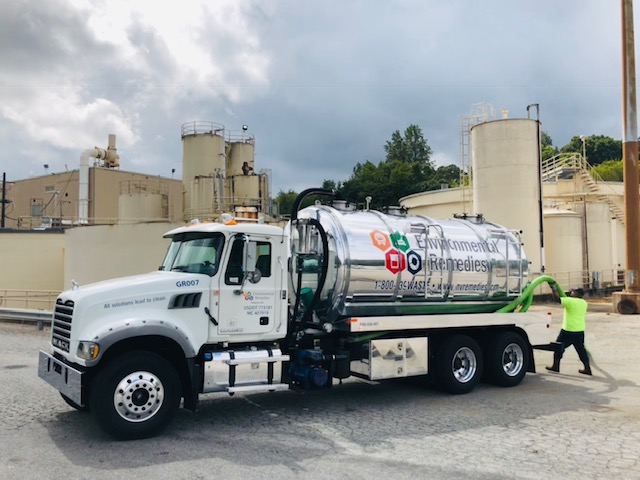Every restaurant makes a hidden byproduct of its daily success: fats, oils, and grease (FOG) that flow from the kitchen drains into a grease trap.
When left unmanaged, these substances can cause severe sewer blockages, foul odors, and even costly regulatory violations. Regular restaurant grease trap cleaning prevents these problems while protecting public health, infrastructure, and the environment.
A single disruption can ripple through production, customers, and credibility alike. Yet the impact stretches further. Many local water authorities report that nearly half of all sanitary sewer overflows come from grease-related blockages, a startling reminder of how maintenance connects private action to public consequence.
What Happens When Cleaning Is Delayed
Neglecting a grease trap rarely stays hidden for long. As fats and solids accumulate, retention time decreases, and the trap’s separation efficiency collapses.
Municipal codes often apply the “25% rule,” where once grease and solids occupy a quarter of the tank’s volume, a full pump-out is mandatory. Surpassing that threshold risks clogging both internal and public sewer lines.
For restaurant operators, the consequences extend beyond plumbing repairs. Sewer backups can halt service, damage flooring and equipment, and prompt fines from city inspectors. Each overflow represents an environmental discharge that may lead to enforcement action under the Clean Water Act’s prohibition on obstructing publicly owned treatment works.
In short, routine restaurant grease trap cleaning is far less expensive than any emergency cleanup or citation.
Why Regular Service Protects Health, Safety, And Infrastructure
Consistent maintenance protects more than pipes. Grease traps generate gases such as methane and hydrogen sulfide as waste decomposes.
These gases are both toxic and highly flammable, creating a volatile environment where a single spark or breath of the wrong air can pose real danger. In fact, the traps that generate them may qualify as permit-required confined spaces under OSHA regulations, demanding strict procedural control.
Professional cleaning crews approach these conditions with precision by using atmospheric testing to assess risk, ventilation systems to clear the air, and protective equipment to guard every movement within those hazardous confines.
Corrosion is another overlooked risk. Hydrogen sulfide attacks concrete and metal, slowly eroding interceptor walls and connected plumbing. Regular cleaning prevents these chemical reactions by removing decaying organic matter before gases accumulate.
From an environmental perspective, professional service also guarantees proper waste handling. Reputable haulers transport FOG material to licensed treatment or recycling facilities, where it can be converted into biofuels or energy feedstock instead of polluting waterways.
That process closes the loop on sustainable waste management and supports local environmental goals.
How a Thoughtful Maintenance Plan Works
Most food service operations start with a quarterly cleaning schedule, adjusting frequency as data and inspection results dictate. The 25% fill threshold remains the industry benchmark for determining when to pump.
Full pump-outs should remove all grease, water, and solids, followed by scraping of walls, baffles, and tees. Partial skimming, or “decanting,” water back into the trap violates many local ordinances and defeats the purpose of cleaning.
Documentation is just as important as the cleaning itself. Each service should generate a manifest or log noting the date, hauler, disposal site, and volume removed. Many municipalities require businesses to keep these records for at least three years, and inspectors routinely check for them during compliance visits.
Applying preventive best practices in kitchen workflows directly improves safety, uptime, and overall productivity:
– Before rinsing, scrape and dry-wipe all cookware.
– Use strainers in the sink to catch any solids.
– Don’t use garbage disposals that turn food waste into small pieces.
– Use licensed collection services to recycle fryer oil.
– Teach your staff how to spot the signs of a filling trap, such as slow drains or smells that won’t go away.
– Performing these actions along with regular professional restaurant grease trap cleaning can make your traps last longer while also saving you money on maintenance.
How To Tell When It’s Time To Call For Service

Warning signs seldom present themselves all at once; instead, they surface gradually, then cluster together like clues you can’t ignore, with each one hinting that your grease trap is already straining under pressure. The most telling indicators often include:
– Slow drainage in prep sinks or dishwashing areas could mean that grease or solids are blocking the flow.
– Waste breaking down and gas building up near floor drains or around the trap can cause smells that won’t go away.
– Drains that often back up or make gurgling noises mean that grease is moving down the drain.
– You can see grime or grease on the surface when you open the trap to look at it.
– If local governments find that pump-outs were missed or records weren’t kept up to date, they may send out inspection notices or compliance warnings.
Even if these issues seem minor, they rarely resolve themselves. Delaying service can cause backups that halt kitchen operations, threaten sanitation, and damage flooring or plumbing infrastructure.
Regular grease trap cleaning acts as a quiet layer of protection, keeping grease levels well below the 25% threshold and maintaining alignment with municipal regulations. It’s a simple, structured routine that prevents costly emergencies before they begin.
Restaurant owners who document service intervals, track completion dates, and schedule reminders see measurable benefits: fewer plumbing issues, reduced downtime, and a steady stream of compliance that protects both their operations and reputation.
Some facilities also implement in-house checks or simple monthly visual inspections of grease levels to decide whether service needs to be scheduled sooner than planned. In practice, that small habit helps avoid the surprise of an unexpected clog during a busy shift.
When any of these warning signs appear, or if it has been several months since the last full pump-out, scheduling professional service is the best protection for both your business and the environment.
Protect Your Business and the Environment with Environmental Remedies
Regular restaurant grease trap cleaning keeps wastewater moving in quiet precision, sidestepping potential penalties, halting corrosion before it begins.
For more than 30 years, Environmental Remedies has stood as the Southeast’s benchmark for industrial cleaning and waste treatment. Request a quote online or call 1-(404)-627-5931 to schedule your next restaurant grease trap cleaning, and keep your business, your team, and the environment protected for the long run.
Frequently Asked Questions
Q: What is restaurant grease trap cleaning?
A: Restaurant grease trap cleaning is the process of removing built-up fats, oils, grease (FOG), and solids from a commercial kitchen’s grease trap system. Regular cleaning prevents blockages, foul odors, and costly regulatory violations.
Q: How often should a restaurant clean its grease trap?
A: Most restaurants start with a quarterly cleaning schedule, but higher-volume kitchens may require monthly service. Cleaning should be done before grease and solids exceed 25% of the trap’s volume, based on local municipal codes.
Q: What happens if a grease trap isn’t cleaned regularly?
A: Neglecting a grease trap can lead to sewer backups, equipment damage, foul odors, and even legal penalties. Accumulated waste also increases fire and toxic gas risks, including exposure to hydrogen sulfide and methane.
Q: How do I know when it’s time to clean a grease trap?
A: Warning signs include slow drainage, persistent odors, gurgling sounds from drains, and visible grease buildup in the trap. If these signs appear, or if several months have passed since the last service, it’s time to schedule a cleaning.
Q: Does the law require professional grease trap cleaning?
A: In many jurisdictions, yes. Municipal codes typically mandate grease trap maintenance and require documentation of cleaning. Violations can lead to inspections, fines, and enforcement actions under laws like the Clean Water Act.






